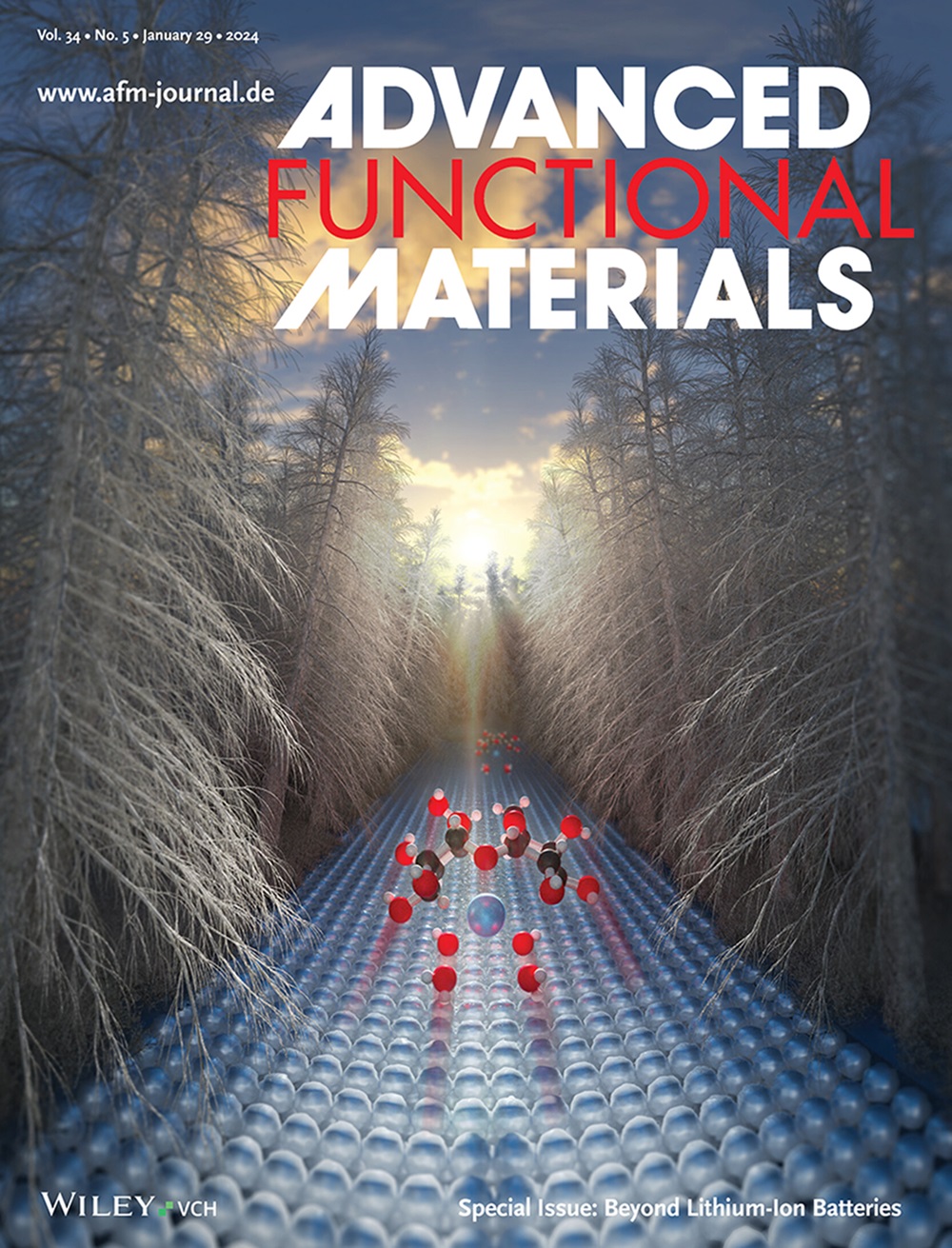设计一种双功能聚醚腈纳米纤维框架,用于稳定的低氮/磷锂金属阳极
IF 18.5
1区 材料科学
Q1 CHEMISTRY, MULTIDISCIPLINARY
引用次数: 0
摘要
虽然锂金属作为先进锂硫电池的阳极具有潜力,但其实际应用受到各种挑战的阻碍,如不受控制的枝晶生长、显著的体积变化和界面不稳定。在这项研究中,开发了一种基于聚芳醚腈的3D纳米纤维(NF)框架,该框架由亲石腈(─CN)和磺酸(─SO3⁻)部分组成。这种双功能设计增强了锂离子(Li+)配位和静电富集,在稳定界面电场的同时均匀Li+通量。静电纺丝NF支架包覆在集流器上,作为结构缓冲层,在空间上限制锂电镀并加强固体电解质界面。具有NF修饰阳极的对称细胞在8毫安厘米(⁻2)下实现2500小时的稳定循环。在锂硫电池(N/P≈3)中,在0.5℃下循环550次后容量保持率达到92.9%,而135 mg硫负载的袋状电池在1C下循环60次后容量保持814.3 mAh g⁻1。该框架的普遍有效性在LiFePO4和LiNi0.8Co0.1Mn0.1O2阴极的锂金属电池中得到进一步验证。通过分子亲锂性与3D结构控制的协同作用,这项工作提供了一种可扩展的策略,可以在有限的库存下稳定锂阳极,从而推进实用的高能量密度电池。本文章由计算机程序翻译,如有差异,请以英文原文为准。
Engineering a Dual‐Functional Polyarylether Nitrile Nanofibrous Framework for Stable Lithium Metal Anodes in Low N/P Lithium Metal Anodes
While lithium metal holds potential as the anode for advanced lithium sulfur batteries, its practical application is hampered by various challenges such as uncontrolled dendrite growth, significant volume changes and interfacial instability. In this study, a polyarylether nitrile‐based 3D nanofibrous (NF) framework engineered with lithophilic nitrile (─CN) and sulfonic acid (─SO3 ⁻) moieties is developed. This dual‐functional design enhances lithium ion (Li+ ) coordination and electrostatic enrichment, homogenizing Li+ flux while stabilizing the electric field at the interface. The electrospinning NF scaffold conformally coats current collectors, serving as a structural buffer to spatially confine lithium plating and reinforce the solid electrolyte interphase. Symmetric cells with NF‐modified anodes achieve stable cycling over 2500 h at 8 mA cm⁻2 . In Li–S full cells (N/P ≈ 3), capacity retention reaches 92.9% after 550 cycles at 0.5C, while a pouch cell with 135 mg sulfur loading maintains 814.3 mAh g⁻1 after 60 cycles at 1C. The framework's universal efficacy is further validated in lithium metal batteries with LiFePO4 and LiNi0.8 Co0.1 Mn0.1 O2 cathodes. By synergizing molecular lithiophilicity with 3D architectural control, this work provides a scalable strategy to stabilize lithium anodes under constrained inventories, advancing practical high‐energy‐density batteries.
求助全文
通过发布文献求助,成功后即可免费获取论文全文。
去求助
来源期刊

Advanced Functional Materials
工程技术-材料科学:综合
CiteScore
29.50
自引率
4.20%
发文量
2086
审稿时长
2.1 months
期刊介绍:
Firmly established as a top-tier materials science journal, Advanced Functional Materials reports breakthrough research in all aspects of materials science, including nanotechnology, chemistry, physics, and biology every week.
Advanced Functional Materials is known for its rapid and fair peer review, quality content, and high impact, making it the first choice of the international materials science community.
 求助内容:
求助内容: 应助结果提醒方式:
应助结果提醒方式:


